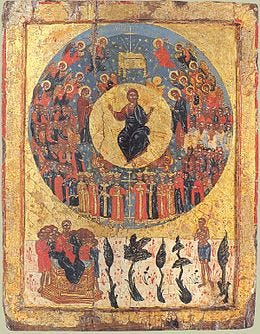Continuatum a parte septima.
In his lifetime and immediately thereafter, Jesus stirred a variety of Jewish expectations about the eschaton. Those Jews who followed Jesus believed that he would bring the central subject of his preaching—the Kingdom of God—to pass during his lifetime; Jesus himself may also have believed so, at least at first, though he pe…
Keep reading with a 7-day free trial
Subscribe to A Perennial Digression to keep reading this post and get 7 days of free access to the full post archives.




